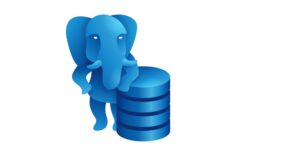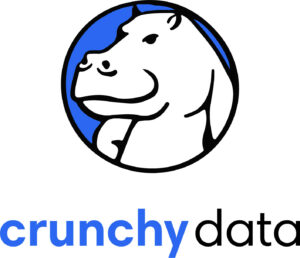
Crunchy Data Goes All-In With Postgres

The emergence of Postgres as a defacto standard for new development projects has surprised many IT observers. But one group that’s not surprised are the folks at Crunchy Data, a South Carolina company that’s been building a Postgres hosting business for transactional workloads for more than a decade. And with its recent product expansion, Crunchy Data is looking to take Postgres into analytics, too.
When Crunchy Data was founded back in 2012, Postgres didn’t register much of a blip on the data management radar. If you read the leading tech publications back then, you will recall a great amount of ink was spent on new open source projects for big data, things like Apache Hadoop and NoSQL databases like MongoDB.
However, when the would-be Crunchy Data co-founders had in-depth conversations with tech leaders at large companies, they found something that surprised them: growing demand for Postgres services, says Paul Laurence, the president and co-founder of Crunchy Data.
“They were absolutely using Hadoop and MongoDB. But where they felt the need most was around Postgres,” Laurence tells Datanami. “They were making a bet on a new open-source data management toolbox, where they had these NoSQL databases. That was part of where they were going. But they also saw this as an opportunity to shift towards open source on the relational and SQL side. And they had evaluated the landscape and selected Postgres as kind of their big bet.”
While it’s mainstream now, the whole commercial open-source business model was still relatively new. Aside from perhaps Red Hat, no other companies had succeeded with it, up to that point. Cloudera emerged as the leading contender to corral the various farm animals (Pig, Hive, etc.) in the Hadoop world, while MongoDB made inroads with Web and mobile app developers to define the nascent NoSQL market. The fact that Crunchy Data would put its commercial open source chips on a non-distributed relational database that was already 26-year-old–practically ancient by IT standards–stood out like stale milqetoast.
“Postgres was largely dismissed when we first started. It was really all about Hadoop and MongoDB,” said Laurence, who co-founded Crunch Data with his father, Bob Laurence. “It was very contrarian at the time…Other folks would say ‘You guys are crazy. What are you guys doing starting a SQL database company? SQL is dead. That’s not a real thing anymore.’”
As it turned out, SQL was far from dead. Within just a few years, all of the leading NoSQL databases would be adding SQL interfaces to their databases, and rebranding the “No” in NoSQL to mean “not only.” The race to add SQL engines to Hadoop was similarly driven by a desire to match the shiny new computing framework to the huge mass of skillsets and toolsets that already existed.
Getting Crunchy with IT
But Crunchy Data wasn’t just about maintaining the relational data model and the SQL language. It was about Postgres, that open source database created by Mike Stonebreaker back in 1986. When enterprise CIOs and CTOs surveyed the market, they saw other relational databases, to be sure. The Oracle database, after all, is still the number one on the DB-Engines ranking. But in the data management Venn diagram, there was one database at the intersection of “open source” and “relational” and “not Oracle,” and its name was Postgres.
“Suffice it to say,” Laurence says, “from that point forward, the momentum behind Postgres has just continued to grow.”
Crunchy Data’s first offering, Crunchy Postgres, mirrored Red Hat’s enterprise Linux offering: a trusted distribution of Postgres. Large corporations and governmental agencies that had settled on Postgres as their database standard adopted this product, and managed the database themselves.
When containers became the preferred method for running virtualized IT services, Crunchy Data developed its own Kubernetes operator, and sold it along with its distribution of open source Postgres as Crunchy Postgres for Kubernetes.
As the cloud business model took off in 2020, Crunchy Data responded by delivering a hosted version of its Postgres distribution. Customers responded positively to this offering, called Crunchy Bridge, which was the first hosted Postgres offering from a pure-play database company.
Earlier this year, Crunchy Data delved into the analytics side of the house for the first time with the launch of Crunchy Bridge for Analytics.
Crunchy Bridge for Analytics doesn’t turn Postgres into a full MPP- style database, a la Green Plum or Redshift. That would require making modifications to Postgres and creating a new fork, with is something that Crunchy Data is loath to do.
Postgres for Analytics
Instead, the Crunchy Bridge for Analytics offering serves as a query engine that runs atop Parquet data that customers have stored in their Amazon S3 buckets, thereby eliminating the need for complex ETL data pipelines. It also brings a vectorized execution engine to speed up response times for traditional analytics and OLAP workloads.
Earlier this month, the company took the next step and announced support for Apache Iceberg in Crunchy Bridge for Analytics. This enables customers to leverage their investment in Postgres to provide lakehouse-style analytics using the popular open source table format.
The decision to build a Postgres service for analytics makes as much sense as it does for transactional workloads, says Craig Kerstiens, the chief product officer for Crunchy Data.
“Why Postgres? Because there’s a huge ecosystem of everything that sits on top,” Kerstiens says. “Whether it’s geospatial with PostGIS or vector search with pgvector, or full text search. Looking at the ecosystem of tools on top, whether it’s Power BI or Metabase…It’ s a vast, vast ecosystem of all sorts of tooling that sits on top and knows how to work with it.”
Crunchy Data’s analytics offering isn’t open source, but it strictly adhere to Postgres standards by functioning as a Postgres plug-in, or extension, Kerstiens says.
“We don’t lag behind on Postgres. We’re not going to be frozen on a version from 10 years ago. We’re able to stay current,” he says. “It’s basically an embedded analytics query engine that just works. You don’t have to think about it. You don’t have to know how it works. To you, it still looks just like Postgres.”
Customers Demand Postgres
Postgres adoption shows no sign of slowing down, and that’s good news for Crunchy Data, which, despite adopting a “West Coast crunchy business model,” is actually based in Charleston, South Carolina. Now in its 13th year, Crunchy Data has grown to more than 100 employees and 500 customers, with more undoubtedly on the way.
That success sometimes leads to interesting questions, says Kerstiens, who helped to scale one of the first hosted Postgres offerings as a Heroku developer.
“Every week, I have someone say ‘Can you run Mongo for me? Can you run Redis?’ No, we’re focused on Postgres,” Kerstiens says. “But that kind of customer love and amazing Postgres experience is really where we focus foundationally.”
While the rest of the data management world zigged with Hadoop and NoSQL, Crunchy Data zagged with scale-up, relational tech. It may have looked like a gutsy bet at the time, but the Laurence’s had what turned out to be an ace card hidden up their sleeve: a willingness to listen to customer input.
“We started because we had some good customers and some folks who were betting on Postgres,” Laurence says. “At the time, we had a very bad website and we’re getting inbound emails and calls from Fortune 50 companies saying, ‘This looks like exactly what we need. We’re investing in Postgres as we go forward and we need someone to come in and help us understand how we do that and enterprise setting.’
“It’s continued to surprise and impress even us when we made that bet initially. It’s adoption has really been impressive,” Laurence continues. “Postgres is all we do. We’ve been a Postgres company from the beginning, supporting organization of all size be successful with Postgres. There’s no shortage of data options out there. If you’re working with us, it’s because you have a Postgres-centric view.”
Related Items:
Postgres Rolls Into 2024 with Massive Momentum. Can It Keep It Up?
AWS Cancels Serverless Postgres Service That Scales to Zero





























